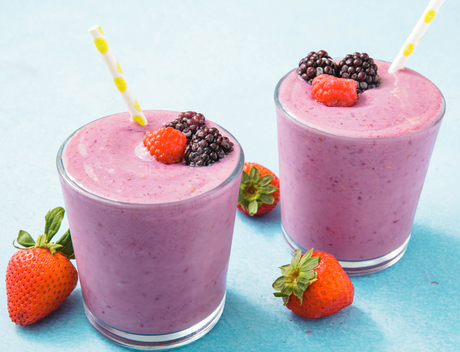A smoothie is a thick beverage, usually drunk with a straw, made from blended raw fruit or vegetables. Unlike juice, Healthy Smoothies are made from the whole fruit (except for the seeds and the skin). Smoothies are not just made from blended fruit or vegetables – they can include ingredients such as water, crushed ice, fruit juice, sweeteners, dairy products, and nuts – the list is almost endless.
The smoothie has become a super food, a lifestyle choice for the health-conscious consumer. Vitamin packed, low in fat, full of goodness, and a healthy alternative to sodas like Coca-Cola and Fanta. With annual sales in the UK alone of 200 million, what’s not to like?
Well, actually quite a lot. Many commercially produced smoothies on sale have sugar levels higher than the healthy limits prescribed by Food Standard Agencies, whilst they have enough saturated fat to rival a double cheeseburger.
The juicing process itself can actually remove some of the nutrients found in a whole fruit or vegetable, whilst the natural, more concentrated levels of sugar found in some fruit is quite acidic, and can cause enamel damage over time. Meanwhile, some smoothies, especially those made with ingredients like whole-milk yoghurt, chocolate, and peanut butter can be very rich in calories.

Suppressing Appetite With Garcinia Cambogia: Fact and Fiction
Then there are the claims about weight loss. Whilst there are those who argue that the smoothie is one of the answers to the obesity crisis which is gripping so many countries in the developed world, there is no empirical scientific evidence yet to prove this.
One such smoothie weight loss product, for example, is Garcinia Cambogia, also known as the Malabar tamarind. Its apologists claim that it blocks the body’s ability to make fat, suppresses the appetite and helps moderate blood sugar and cholesterol levels.
However, despite the hype, the weight loss benefits of the supplement are not proven. A Journal of Obesity review found that people who took garcinia cambogia and apple cider vinegar lost two pounds more weight, on average, than those who didn’t. However, this could have been as much because of the lower calorie diets and exercise regimes these people were following, as due to the supplement itself.
So smoothies, in themselves, are not necessarily the universal panacea that some claim. They do improve your metabolism and get your bowels moving – which is very important for the colon – but may conflict with existing medication and cause heart problems. Better to check with your doctor if you are taking regular tablets before you change your diet completely and fully embrace the smoothie.
That is not to say it is impossible to have a smoothie that is both tasty and good for you. The Ultimate Guide to a Delicious Healthy Smoothie will always feature ingredients very prominently on page one.
Foods You Should Never Add to Your Smoothie?
Let’s start by listing the type of ingredients that should not be in a smoothie. Well, full-fat dairy products, such as ice cream, or full-fat yoghurt are high in calories and cholesterol and should be avoided where possible. Tea and coffee are high in caffeine and can have enough side effects, and chocolate, whilst delicious, can hardly ever be regarded as a healthy addition to such a beverage!
On the other hand, a surprising basic ingredient is ice. A Health magazine survey found that people who drank thicker smoothies felt fuller than those sampling a thinner version – even if the calorie count was the same. Ice bulks the smoothie out without adding calories.
Non-fat yoghurts or cottage cheese can give the smoothie a portion of healthy protein without excess calories, whilst using coconut milk or water, vanilla extract, or a teaspoon of honey can give your drink a touch of sweetness, without the use of unhealthy additives or sugars.
How to Make a Perfect Green Smoothie?
Green smoothies – made with leafy greens loaded with antioxidants and vitamins can be very healthy. Although most green leafy vegetables like spinach, collard greens and kale, can taste bitter, this can be offset, when blended with other ingredients like banana which softens both the flavor and the texture.
Adding ingredients like Omega 3 and unsaturated fats can also improve the health of your smoothie. A tablespoon of flaxseed meal added to your smoothie provides you with both fiber and inflammation-fighting Omega-3 fatty acids, whilst a little bit of unsaturated fat such as in half an avocado helps fill you up and stop wanting more food.
As with many things, the smoothie is not the universal cure to the global obesity crisis; nor is the superfood once promised. In fact, various commercially produced smoothies are so full of calories and sugar that they are as unhealthy to consume as some fast foods.
On the other hand, by choosing the right ingredients, and avoiding unnecessary additives, fats, and sugars, it is possible to produce a drink that is both delicious and good for you. Where possible, try and blend such drinks yourself. Then, at least, you can control what goes into your smoothie and you can experiment until you find a taste you like.
